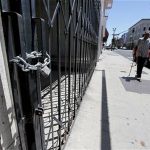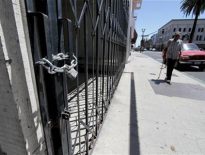(Reuters) – Buffeted by industry worries about high electricity costs on one side and public safety fears about nuclear power on the other, Japan’s leaders are still struggling to craft a coherent energy policy more than a year after the Fukushima disaster.

Critics say Prime Minister Yoshihiko Noda, whose top priority is raising the sales tax to curb bulging public debt, is caving in to Japan’s “nuclear village” – a powerful nexus of utilities, bureaucrats and businesses – by restarting the first of Japan’s 50 reactors to come back on line since the crisis.
Kansai Electric Power Co’s No. 3 unit at its Ohi plant, in western Japan, will resume supplying power to the grid as early as Thursday, and its No. 4 unit will also restart this month, as the government seeks to avoid a summer power crunch.
Many experts, though, say the nuclear interests are unlikely to win the longer-term battle given the hidden costs of atomic power exposed by Fukushima and a new set of forces pushing for a bigger role for renewable sources of energy such as solar power.
“They (the nuclear interests) are fighting with their backs to the wall … and assuming that after one restart, the rest will fall into place,” said Martin Schulz, a senior researcher at Fujitsu Research Institute. “But basically, there is very little they can do to turn the clock back.”
Nuclear power supplied almost 30 percent of Japan’s electricity before last year’s disaster, when a huge earthquake and tsunami devastated Tokyo Electric’s Fukushima plant causing meltdowns, spewing radiation and forcing evacuations.
In the months following the accident all the country’s reactors that had been online were shut down for maintenance, with public safety fears preventing them from restarting.
The knock-on effect has posed the biggest challenge to Japan’s energy policy since the 1970s “oil shocks” of rising fuel import prices that drove resource-poor Japan’s big push into nuclear power, as well as huge gains in energy efficiency.
ENERGY PLAN SCRAPPED
Prompted by the Fukushima disaster to scrap a 2010 plan that would have raised nuclear power’s share to more than half by 2030, the government has begun seeking public comment on three medium-term energy mix options – with the choice for atomic generation set at either zero, 15 percent or 20-25 percent. Many see the 15 percent solution as the most likely scenario.
Noda, a former finance minister, has said the government aims to reduce reliance on nuclear power, but has also made clear his worry about the impact on the world’s third-biggest economy of a complete withdrawal from atomic energy.
Japan has estimated it will spend about $34 billion more on fuel imports in 2012 than a year earlier since the bulk of its reactors will likely remain offline.
“Of course, it is better not to build any new power plants. But then we can only rely on fossil fuel and renewable energy,” Noda said in a weekend speech.
“How popular can renewable energy become? … If the share of fossil fuel rises, we will see a clash with the global warming problem. And what about the economic impact?”
The Ohi restarts, however, have sparked a series of increasingly large street protests, and surveys show about 70 percent of the public favors exiting nuclear power eventually.
“They want to restart as much capacity as they can but it depends how much public opposition and how much local government opposition there is,” said Andrew Dewit, a professor at Rikkyo University in Tokyo who studies energy policy.
DRIVE FOR RENEWABLES
In a sign of the competing forces, new incentives for renewable energy took effect on Sunday – the same day the Ohi reactor No. 3 was switched back on.
The feed-in tariff (FIT) scheme requires utilities to buy electricity from renewable sources at pre-set premiums for up to 20 years. Costs will be passed on to consumers through higher bills to boost renewables, which apart from large hydro-electric dams now account for a mere 1 percent of Japan’s power supply.
Japan lags way behind internationally in renewables after neglecting the sector for years to concentrate on nuclear power.
Globally, renewable energy accounted for around 20 percent of electricity production in 2011, according to Renewable Energy Policy for the 21st Century, with around 15 percent of that coming from hydropower.
Experts say another key step would be to deregulate the electricity oligopoly dominated for decades by 10 regional utility fiefdoms, especially by “unbundling” their grip on power generation, transmission and distribution – a setup that hampers other suppliers from accessing the power grid.
“The grid is the most important and the first priority is access,” said Tetsunari Iida, executive director of the Institute for Sustainable Energy Policies.
A government advisory panel is in favor of such reforms, but how much progress can be made is far from clear.
“This is now the big debate and it will be a very messy discussion,” said Fujitsu Research’s Schulz.
Any decisions the unpopular Noda makes could at any rate be derailed if a new administration emerges from an election that must be held by September 2013 and could come sooner.
Former Prime Minister Naoto Kan, premier when the Fukushima disaster hit, became a harsh critic of nuclear power.
“It’s very political. Kan was anti-nuclear but now Noda is accepting nuclear power,” said Tatsuo Hatta, an economist and member of an expert panel that drafted options for Japan’s energy mix.
“That could change,” he added, if political forces such as a local party led by popular Osaka Mayor Toru Hashimoto – a fan of deregulation and a critic of utilities – play a part in any new government.
(Additional reporting by Yoko Kubota and Risa Maeda; Editing by Aaron Sheldrick and Alex Richardson)





